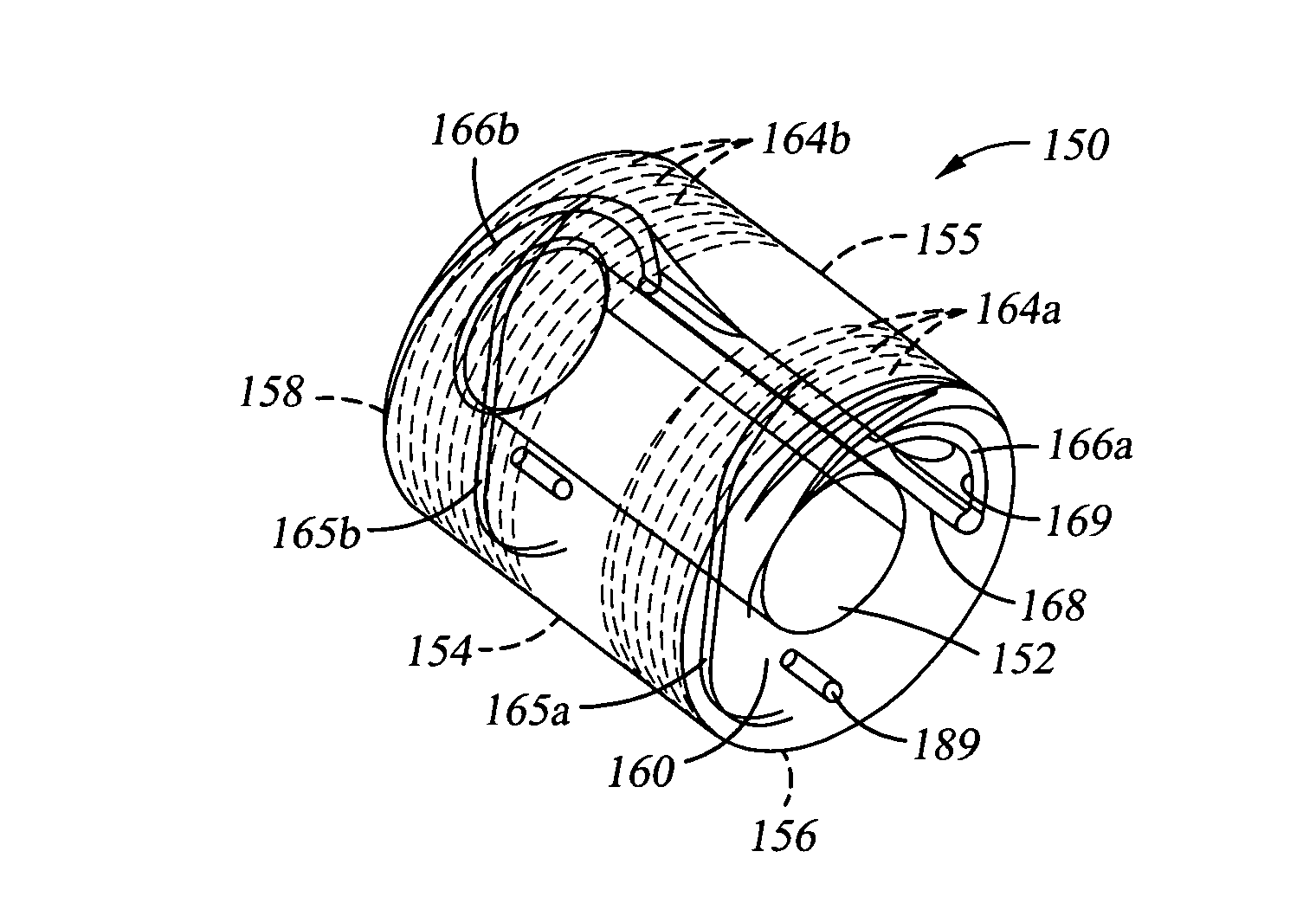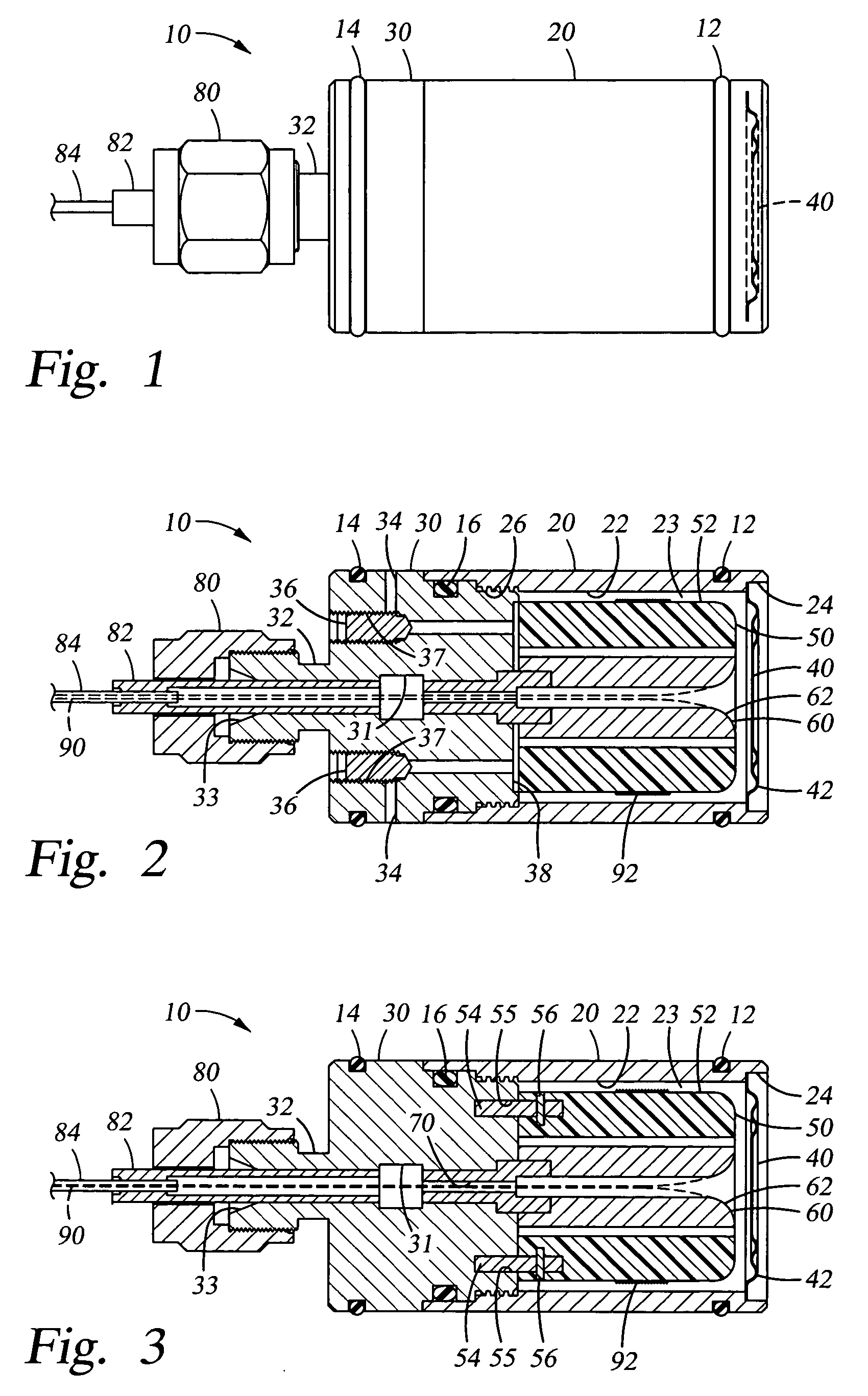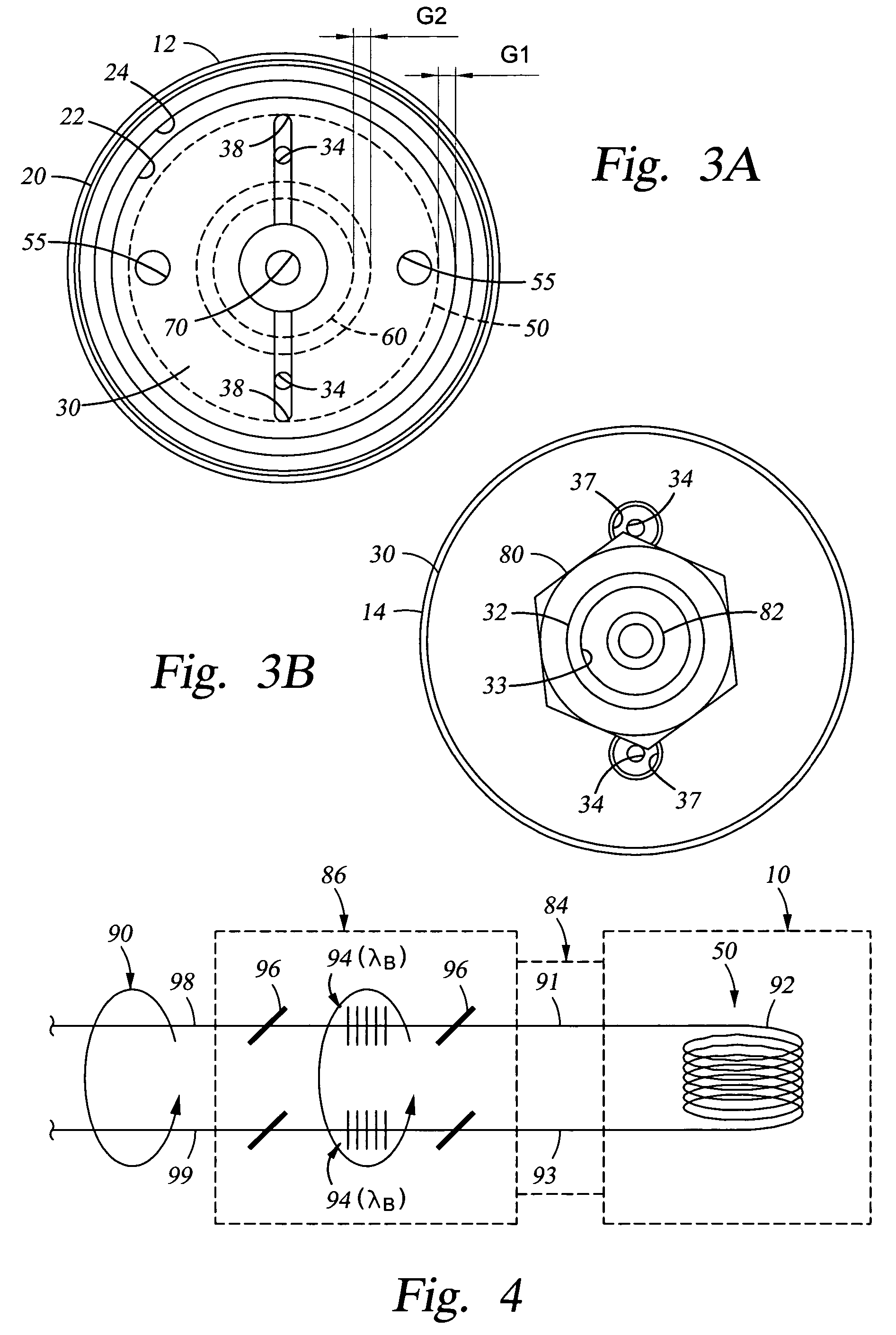High pressure and high temperature acoustic sensor
a high-pressure acoustic sensor and high-temperature technology, applied in the field of sensors, can solve the problems of mandrel deformation, disturbance of optical fiber, and the belief that most prior-art hydrophones are unsuitable for deployment in extremely harsh environments
- Summary
- Abstract
- Description
- Claims
- Application Information
AI Technical Summary
Benefits of technology
Problems solved by technology
Method used
Image
Examples
Embodiment Construction
[0032]In the interest of clarity, not all of the written description and figures of U.S. patent application Ser. No. 10 / 266,903 (the '903 application), to which the present disclosure is a continuation-in-part, are provided in the present disclosure. Furthermore, not all features of actual implementations of an acoustic sensor are described in the disclosure that follows. It will of course be appreciated that in the development of any such actual implementation, as in any such project, numerous engineering and design decisions must be made to achieve the developers' specific goals, e.g., compliance with mechanical and business related constraints, which will vary from one implementation to another. While attention must necessarily be paid to proper engineering and design practices for the environment in question, it should be appreciated that the development of an acoustic sensor would nevertheless be a routine undertaking for those skilled in the art given the details provided by t...
PUM
 Login to View More
Login to View More Abstract
Description
Claims
Application Information
 Login to View More
Login to View More - R&D
- Intellectual Property
- Life Sciences
- Materials
- Tech Scout
- Unparalleled Data Quality
- Higher Quality Content
- 60% Fewer Hallucinations
Browse by: Latest US Patents, China's latest patents, Technical Efficacy Thesaurus, Application Domain, Technology Topic, Popular Technical Reports.
© 2025 PatSnap. All rights reserved.Legal|Privacy policy|Modern Slavery Act Transparency Statement|Sitemap|About US| Contact US: help@patsnap.com



